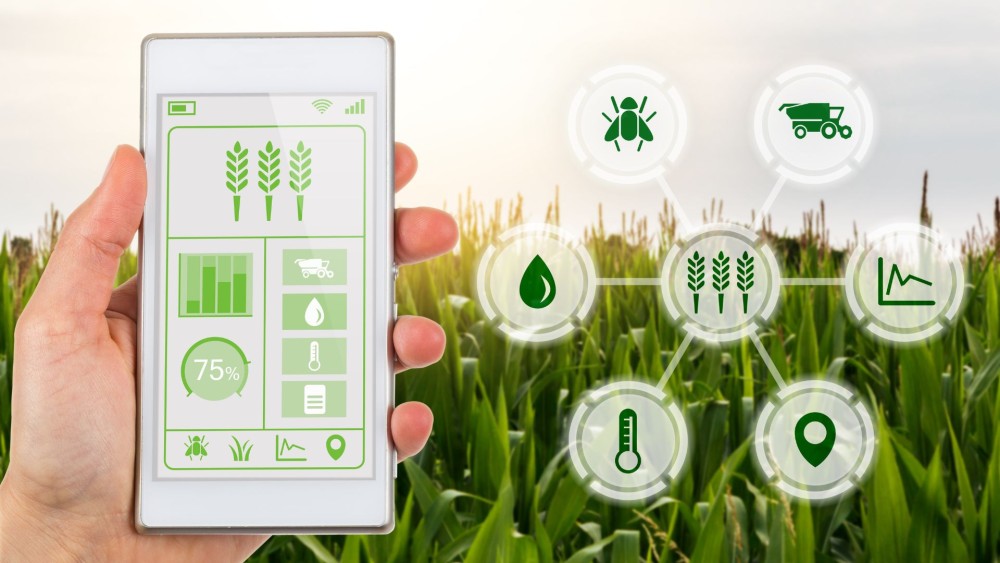Agritech has massive potential in Indonesia
26 Apr 2023

Amid Indonesia's push towards becoming an industrialized nation, it’s easy to overlook another major pillar of the country’s economic strength: Agriculture.
The third largest contributor to Indonesia’s GDP in 2022 at 12.4%, after trade and manufacturing, the agriculture sector is a critical part of the archipelago’s economic growth. Situated upon the Pacific ring of fire, a chain of volcanoes that stretches from the island of Sumatra in the west to the island of Java and Bali, Indonesia possesses some of the world’s most fertile soils, making it a leading producer of food crops, estate crops, and fisheries. It is the world’s third-largest producer of rice and its largest producer of crude palm oil and coconut, and a top-three producer of rubber, coffee and cacao. Indonesia is also the world’s third-largest producer of aquaculture products after China and India.
However, despite these advantages, Indonesia’s agriculture sector has a history of inefficiencies. Its farms and ranches, of which the majority are run and operated by smallholders, still use traditional production methods such as using scales to individually weigh chickens to monitor their health and sickles to harvest rice. Moreover, the distribution process from farmers to end-customers is bogged down under several layers of intermediaries – in no small part due to the nation’s lack of infrastructure. Due to this complex web of intermediaries, it has been estimated that farmers receive only 10% of the margin from the sale of their produce.
At the same time, the Indonesian government has an interest in improving productivity in agriculture – if nothing else than to ensure food security. According to the Indonesian National Development Planning Agency, the Indonesian population will grow to reach 305 million by 2035 and then to 330 million by 2050. Meanwhile, the number of farmers continues to decline, from 42.4 million in 2011 to 38.7 million in 2021, according to the National Statistics Agency.
Fortunately, thanks to Agritech, the situation is improving.
One example of such improvement due to Agritech can be gleaned from the project run by the Indonesian government and the Asian Development Bank from 2017 to 2021. The project oversaw the creation of a local digital ecosystems that were managed by the farmers in partnership with providers of ICT (Information and Communication Technologies) services. Through widely available cellular phones, farmers were able to more easily connect with suppliers and buyers and engage in faster and more transparent transactions. Done in tandem with a separate project to upgrade irrigation systems in 74 districts in Indonesia, the digital ecosystem project was also used to assist farmers in choosing what to plant based on market and climate conditions.
The results speak for themselves. The project oversaw a 73% increase in chili production from 2020 to 2021 and boosted the income per hectare of the farmers by 213%. The success of the project prompted to the Indonesian Ministry of Home Affairs to replicate the model in 41 districts, reaching more than 36,000 by December of the same year. In February of this year, the Ministry of Agriculture, with the support of the Food and Agriculture Organization at the UN, compiled the lessons learned and issued the National e-Agriculture Strategy which, among other targets, includes the plan to launch a nationally integrated database for farmers by 2027.
That is not to say that the Indonesian government is the first to catch on the potential of Agritech in the country. Many startups have their own brand of agricultural solutions that were launched as early as the mid-2000. And investors continue to be bullish about them because Indonesia is at a period of demographic bonus, wherein over 70% of its population are between the productive age of 15 and 64 years.
Some examples include Sayurbox and Tanisupply, which runs a Farming as a Service, or FaaS, to directly connect end-customers with farmers. Startups such as eFishery and Aruna aims to improve yields by integrating digital solutions. These startups continue to be active on the ground and continue to garner significant interest among investors. DealStreetAsia, a Singapore-based media company that focuses on the private capital industry, reported that private investments towards at least nine Indonesian Agritech startups have amounted to nearly half a billion dollars by the end of 2022.
As agricultural products constitute essential needs, it is already clear that the consumer base for Agritech will continue to grow rapidly. Combined with the country’s young and digital-savvy population and the government’s vested interest to improve agriculture productivity, investors are indeed well poised to profit from Agritech’s massive potential in Indonesia.

